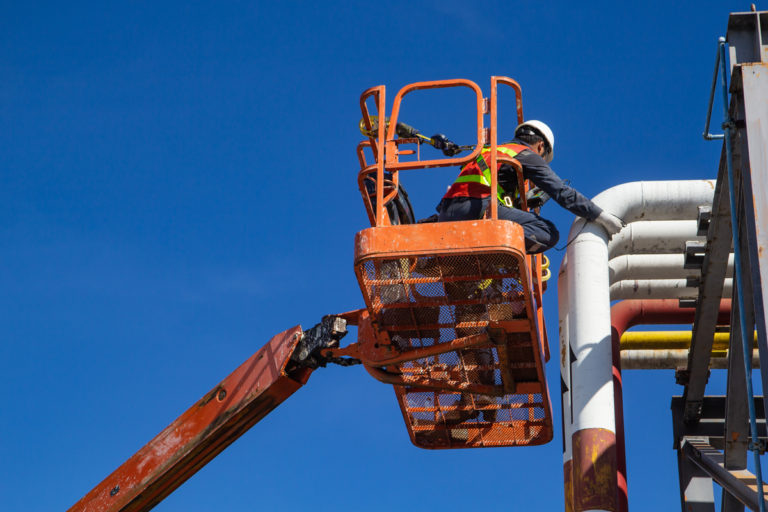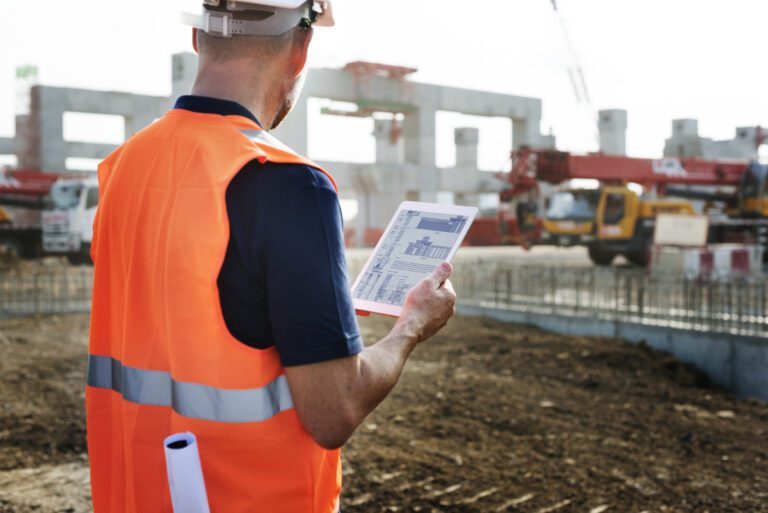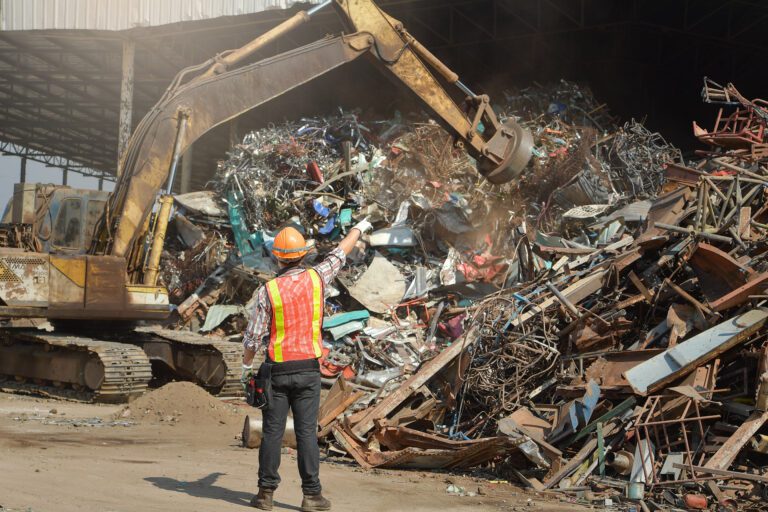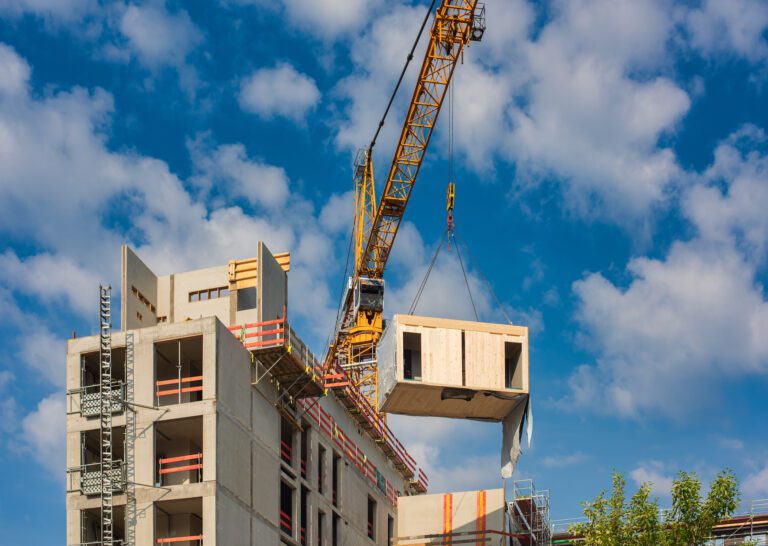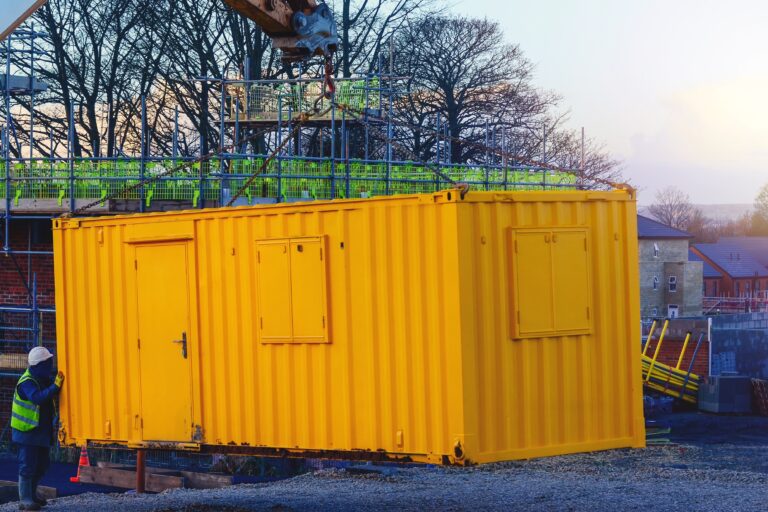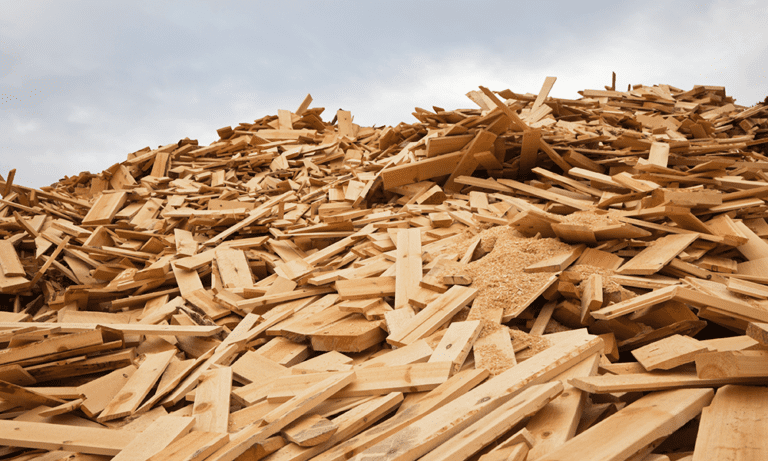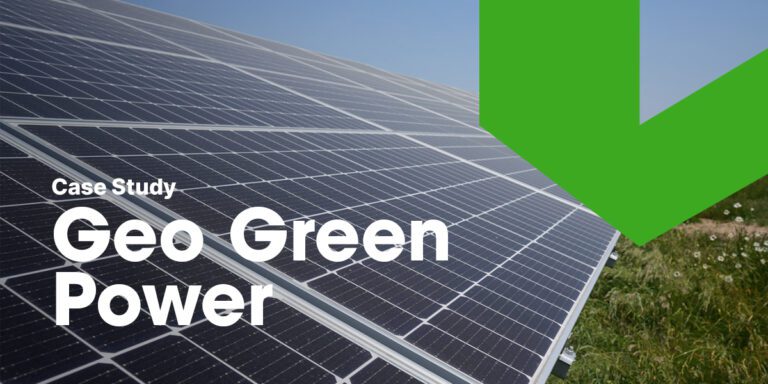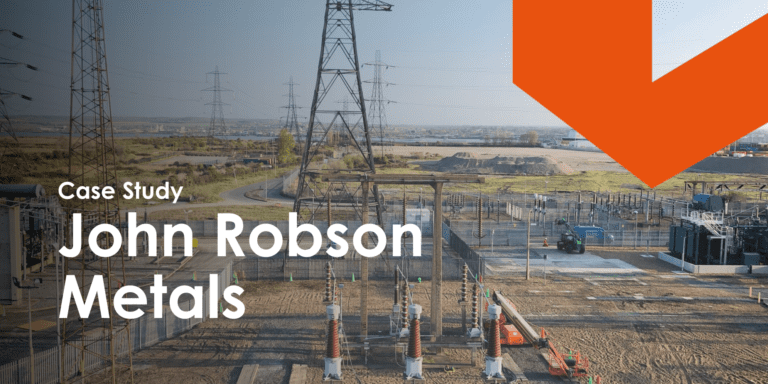28th June, 2022
Sustainability in Construction: How Your Business Can be More Green
Sustainability in construction is more of a focus than ever, as businesses seek new ways to become more sustainable. Read on for ideas of how to be more green.
Sustainability in construction is now much more of a focus within the industry.
As the world is moving towards increased sustainability in other sectors, construction companies need to evolve with this change. According to the Royal Academy of Engineering, the construction industry contributes to nearly 40% of the UK’s carbon emissions.
From creating sustainable building designs, to improving waste disposal, there are multiple ways to make your business more green.
As an industry, construction is a big user of natural resources, which unfortunately isn’t helpful for the environment. Using resources such as wood, oil, or certain metals, contributes to soil degradation, water shortages, and damage to ecosystems.
Due to the finite nature of these resources, one way or another, we will run out of them in the future.
Now, biodegradable materials, renewable energy sources, and other methods are available and accessible, making it easier for businesses to become more green.
In this blog post, we will explore various ways in which construction companies can increase their sustainability, and decrease their negative impact on the environment.

What Is Sustainability in Construction?
Sustainability in construction involves using techniques that extend into the future. This means buildings are designed and constructed with the environment in mind, and will continue to have minimal impact for years to come.
The main goal of sustainable construction is to reduce the industry’s impact on the environment on the whole. This means care must be taken to reduce waste and energy consumption on-site, in order to protect the surrounding natural environment.
Reducing impact can be achieved through various techniques and plans put into place when managing construction projects. For example, incorporating reusable and renewable materials into construction, or considering alternative energy sources like solar and wind power for your site.
Why Is It Important to Be Sustainable in Construction?
The main importance of sustainability in construction, and making businesses more green, is to limit the damaging effects to the environment.
The use of eco-friendly methods in construction can improve the lives of future generations, by protecting habitats and providing for the expanding population.
For example, by designing and constructing buildings that consist of reusable or biodegradable materials, this will promote the right idea to future generations. As a result, the original materials used in construction will either biodegrade back into the earth, or be recycled into a future project.
This is important in terms of future waste management as reusable materials produce less waste to be sent to landfill. Failure to dispose of waste correctly can contribute not just to environmental pollution, but can also negatively impact the health of people in the community.
Another important aspect of making your construction business as sustainable as possible, is the growth in attraction from clients.
As the future of construction is green, potential new clients will be drawn to businesses who are making their own efforts towards being more sustainable.

How To Make Your Business Green
There are multiple ways you can make your construction business more green.
As construction project manager, introducing changes to materials, transport, and waste management can all contribute to the sustainability of your business.
Major ways to be more green as a construction business, and do your bit for future generations, include:
- Using renewable energy sources
- Using reusable, recycled, or biodegradable building materials
- Managing waste disposal
- Altering transport methods
We will go through these examples in more detail below. However if you’re looking for extra ways to make your business greener, check out our list of green construction techniques.
Renewable Energy
Wind power, hydropower, and solar power are all sources of renewable energy that can be stored in the short-term, and used to generate heat and electricity during construction.
If this type of energy is prioritised over others, it reduces the need for fossil fuels usage on-site.
Hydropower
This energy source is readily available and unaffected by weather conditions and can therefore be used to fuel equipment and lighting used on site while work is being carried out.
Using hydropower has its advantages, as its only byproducts are heat and water (which are non-toxic), it has no contribution to air pollution, and it is relatively inexpensive in the long-run.
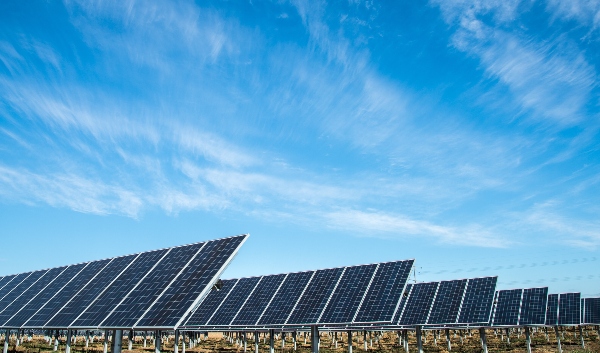
Solar Power
Another source of renewable energy is solar power which can be produced in two forms -, active and passive.
During construction, placing windows strategically, using heat absorbing surfaces, and using insulation, are all forms of passive solar power, as they optimise heat or light directly from the sun.
Active solar power comes in the form of systems such as solar panels, which convert energy from the sun to usable forms of energy, such as hot water.
Solar power is useful for construction businesses as the energy generated can be used to provide electricity for power tools on-site, or solar panels can be installed onto buildings to add to their long-term sustainability.
Wind Power
This fuel source is cost-effective and clean, as wind power doesn’t add to air pollution and is sold at a fixed price over long periods of time. Therefore, it is a low-cost way to help reduce greenhouse gas emissions.
Construction sites can use wind energy as their main source of fuel as it is suitable for areas not connected to the power grid. Therefore, wind power is useful for sites that are rural, so wherever construction is occurring, sustainability can be achieved.
Building with Sustainable Materials
Popular building materials such as concrete contribute towards the world’s Co2. For your business, it may be useful to trial out sustainable materials to begin with so you can evaluate where swaps can be made.
For example, straw bales can do the same job as concrete as they can provide structural support to buildings as well as providing resistance to the wind. In addition to this, straw is cheaper, environmentally friendly, and biodegradable.
Biodegradable Materials
A lot of the time, even when materials are reused or recycled, they end up in landfill.
Biodegradable materials help to recycle back into the environment as they can be broken down by bacteria and fungi. This allows natural decaying processes to continue without releasing toxins back out into the atmosphere.
Here are some examples of what you could be incorporating into your construction that don’t end up in landfill:
- Bamboo
- Cork
- Bioplastics
- Linoleum
- Bioplastics
- Organic paints
Although using these materials improves your chances of reducing waste overall, it’s important to ensure correct waste disposal methods are in place for materials that can’t be recycled.
This leads us nicely onto our next section…
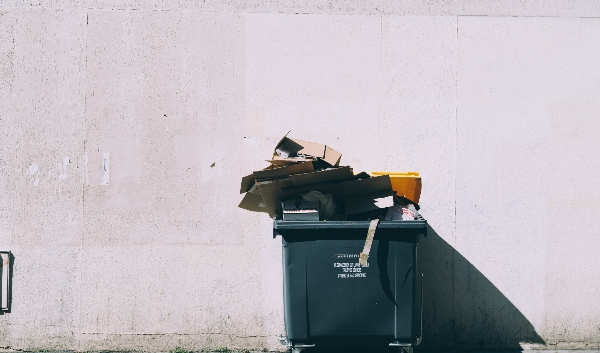
Better Waste Disposal Methods
Waste is inevitable in construction, but it is a legal requirement to dispose of this waste properly from construction sites.
As we mentioned earlier, building with sustainable, recyclable, or biodegradable materials means you can avoid sending all of your waste to landfill. It may be possible for you to use the waste from ripping down one building, to help construct the next one.
Another way to reduce your waste within construction is to use on-site wastewater treatment plants. Treating the water used on-site creates a large resource ready to be used, as this water can be used to clean equipment or pumped back into construction to lower your businesses water footprint.
Before sending all of your leftover waste straight to landfill, donating construction materials to local people gives the materials a new use. This way the materials avoid landfill, and can be put to use in a different but effective way. Furthermore, this also allows the public to recognise the fact that your business is making more sustainable choices.
Despite efforts to decrease the amount of waste created on-site, there will always be certain materials that can only be sent to landfill.
The European Waste Catalogue (EWC) or List of Waste (LoW), categorises all of the different types of waste, so you can be sure you’re disposing of everything correctly, and in the least harmful way.
At YardLink we have various waste disposal hires available, to ensure your waste management is as sustainable as possible, check them out here.
Efficient Transport Methods
Transport is central to construction project management, as without your materials or equipment, the job can’t begin.
The locality of suppliers is important to avoid longer journeys that contribute to carbon emissions. YardLink provides depots across the country so they are local to you, help to limit your travel, and therefore decrease your environmental impact.
Using a fleet to transport your team and everything they need to get the job done is still essential, however, it can be done more efficiently and sustainably.
First of all, it may be that you want to consider switching to eco-friendly fuels or vehicles, if that’s possible for you and your business.
Bioethanol is a good alternative to petrol and diesel, as it limits pollution while increasing vehicle performance, and as an extra added bonus, is made from waste materials.
Alternatively, Biodiesel which is made from edible oils, is useful in areas where diesel pollution is high, as the reaction between oil and alcohol is a lot less harmful to the environment.
It then goes without saying that eco-friendly or Green vehicles are another way to help your business become more sustainable. For example, going completely electric with your vehicles is a good way to reduce your carbon footprint and eliminate fuel usage.
If this isn’t possible for your company due to the cost or maintenance, there are other ways you can adapt your transport plans.
For example, making your transport as efficient as possible can be done by planning the routes of your fleet to avoid going the long way round, and ensure your vehicles aren’t making unnecessary trips or stops off while travelling from A to B.
This way the transport in your business will be efficient, cost-effective, keep your operations running smoothly, and lower your carbon footprint overall.
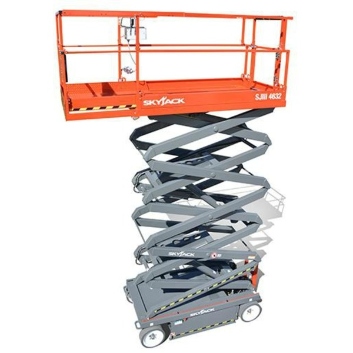
Electric Construction Equipment
Electric construction equipment can also impact the sustainability of your construction business.
Switching from diesel to electric has many benefits such as reduced noise pollution, and lower carbon emissions and running costs.
Project managers have a responsibility to reduce the amount of noise pollution produced on-site, according to the Control of Pollution Act 1974.
Electric equipment can limit noise pollution as it is considerably quieter than other equipment that runs on diesel or petrol. This not only protects the nearby communities, but the workers on-site too. Changing to electric equipment directly affects the protection of your team, as reduced noise pollution can prevent temporary or permanent hearing problems.
Due to the construction industry being responsible for a huge percentage of the UK’s Co2 emissions, it is important that construction businesses are prioritising green building techniques. Substituting equipment for electric versions eliminates the need for fossil fuels within construction, as diesel and petrol are no longer required, and lithium-ion batteries can be used instead.
Using electric equipment equally helps with operating costs, as fuel isn’t required. Electric models automatically switch off when the operator stops the machine, and this means energy isn’t wasted.
At YardLink we carry a lot of electric machines, such as electric scissor lifts and electric boom lifts, to help with the sustainability of your projects. If you’d like to know more about the electric equipment we have available, check out our range here.
Sustainability in Construction: How Your Business Can Be More Green
Sustainability in construction can do so much for your business, as well as reducing your impact on the environment.
Adapting the way you and your construction team work, also has the potential to improve the efficiency, and cost-effectiveness of your business.
An increasing amount of the population are taking more interest in making eco-friendly choices and the demand for sustainable housing and buildings is on the rise.
To cater to this, construction project managers can implement sustainable choices into their plans, whether that is building with passive solar power in mind, or decreasing the amount of concrete used.
At YardLink we understand the importance of sustainability and doing our bit to help the environment.
One of the biggest contributing factors when sourcing construction equipment can be driving to depots which are located miles away. However, YardLink have a large network of depots nationwide which means wherever you’re based, there’s likely to be a depot near you. As such, this means making less trips for the equipment you need as you can access everything from one place. To find out more about how we can help your project, simply get in touch.
YOU MIGHT ALSO BE INTERESTED IN

